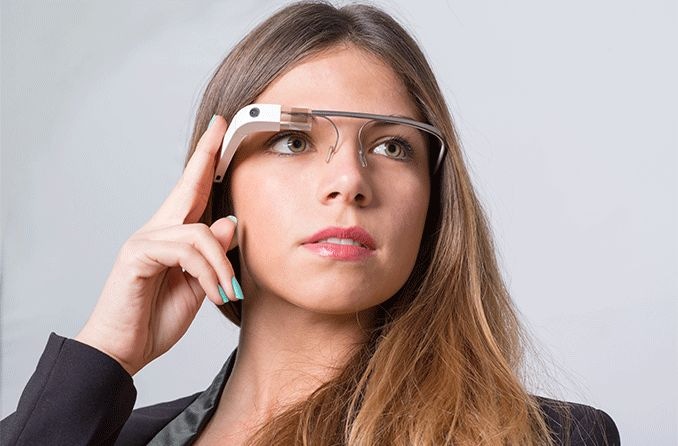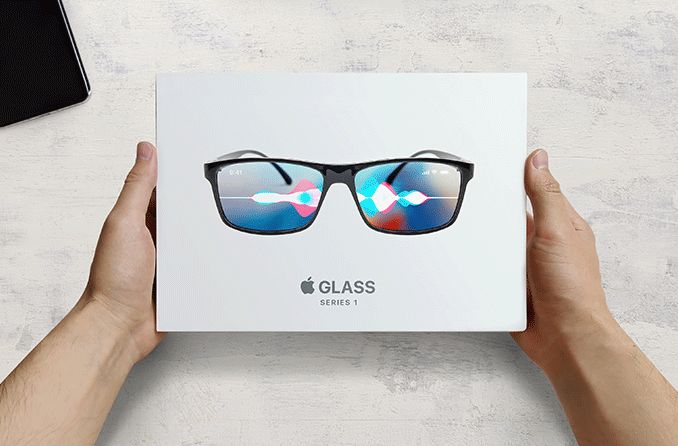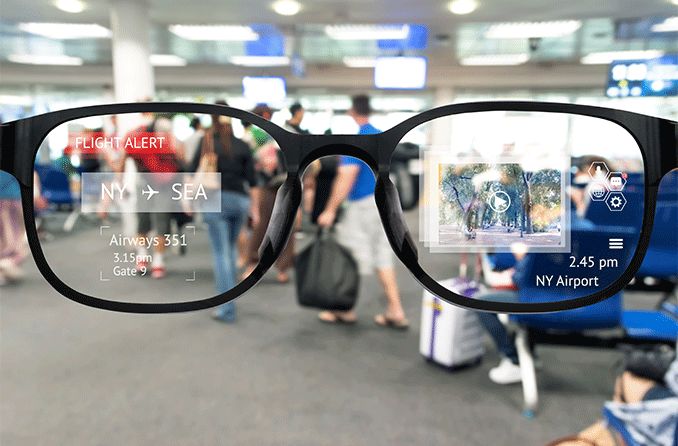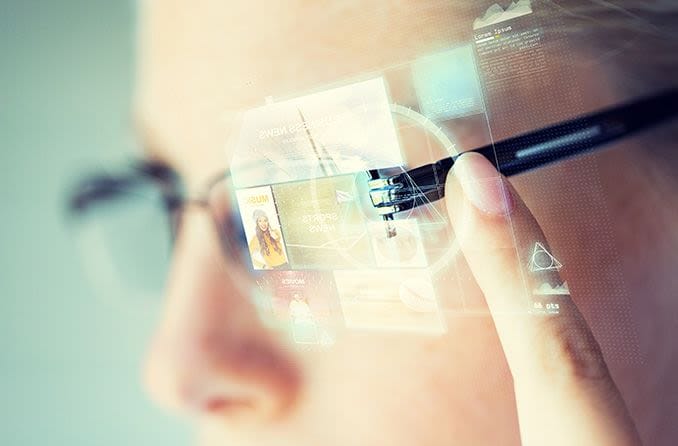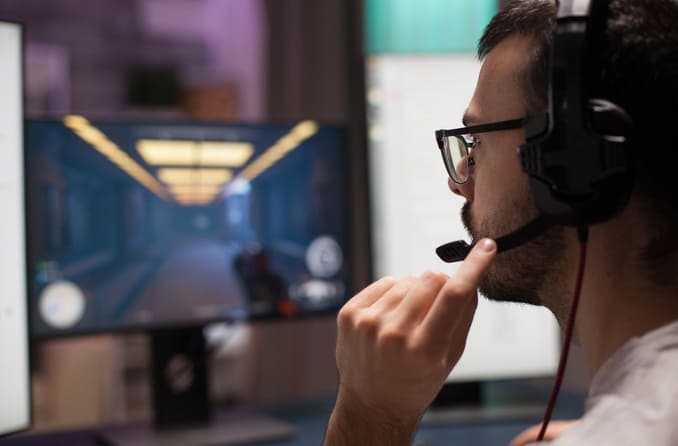The world as we know it is changing. Today, reality is beginning to merge seamlessly with simulations. Augmented reality (AR) is transforming how we experience everything. Recent advancements in computer-mediated reality have made their way into several interactive devices. Smart glasses are one such device that makes ample use of this revolutionary technology.
Smart glasses typically consist of a wearable computer and display attached to eyeglass frames (with or without prescription lenses). They feature next-generation innovations, taking eyewear to a whole new level. Google has been around since the beginning, first introducing the world to Glass in 2013. Other smart glasses are also on the market now, including Epson Moverio, Vuzix Blade and Everysight Raptor.
Futuristic in their concept, the Google smart glasses have been a favorite of tech enthusiasts. They can function like an efficient hands-free smartphone, full of features that make dealing with day-to-day tasks a piece of cake.
While the current version of Glass — Enterprise Edition 2 — is being targeted toward enterprise and industrial applications rather than consumers, there’s still a lot of interest. Regardless of the intended market, the designs and concepts are paving the way for the smart glasses of the future.
What exactly are Google glasses?
Glass is a wearable computer that has a transparent optical head-mounted display (OHMD). Using a combination of visual, audio and location-based inputs, it offers the user an enriching AR experience while generating relevant information.
Developed by Google X (Google’s “moonshot” research and development division), these glasses follow the principle of ubiquitous computing. Ubiquitous computing devices are ideally always available and constantly connected.
The original 2013 Google prototype glasses were taken off the market in 2015. In 2017, Google announced Google Glass Enterprise Edition. Glass Enterprise Edition 2 followed in 2019. These newer versions feature more advanced tech and multiple improvements upon the previous prototype.
How do Google glasses work?
As a pioneering model of smart glasses, Google glasses have become a popular gadget in the technology industry. This, in turn, brings us to the question — exactly what do Google glasses do?
These smart glasses depend on the Glass OS, an operating system based on a version of Google Android. The OS is designed to run application virtualization tools called Glassware that are specifically optimized for Google glasses.
You can control Google glasses in two ways. One of the methods is through the touchpad that is located on the rim of the glasses. Using a horizontal swipe of the finger, you can access and navigate the menus on the device. Downward swipes can cancel choices or put the glasses in sleep mode.
The second method is through voice commands. A microphone embedded in the glasses picks up commands that the microprocessor interprets. These commands are part of a default set that the device is trained to recognize. It works in a way similar to the Google Assistant on your mobile and other smart home devices.
Information requested by the user is sent through a micro projector to the lens. Glass uses a field sequential color (FSC) liquid crystal on silicon (LCoS) display to show images. This display occupies about 5% of the user’s field of vision. Only you can see the display.
You can view the image in its true colors without difficulty. This is because the projector emits the image directly onto the retina using a semi-transparent prism. You can adjust the angle of the prism by moving the front part of the glasses to bring the image into optimal focus.
These smart glasses can connect to the internet over both Wi-Fi and Bluetooth connections. The camera lens on the outer edge of the glasses can take pictures and record videos. Embedded into the glasses is a global positioning system (GPS) microchip that can convey your current location using satellite signals.
SEE RELATED: What’s happening with Apple Glasses?
Features of Google glasses
With its wearable technology and advanced software, Google Glass boasts futuristic levels of performance. Listed below are a few of the top features of the original Google glasses:
- Hands-free, first-person photos and video recordings – Through simple voice or touch commands, the Google glasses camera can take pictures and capture videos. This allows you to go into stealth mode if you want. You can even share exactly what you are viewing in real time using Google Hangouts.
- Gesture control – While most operations are carried out through touch and voice commands, Google Glass also recognizes simple facial and head movements. For example, you can turn the screen on and perform certain operations by combining eye movements and tilting your head.
- Google search results display – You can request any information you want using Google’s search engine. Google Glass will show the result instantly via a Wi-Fi or Bluetooth-connected network.
- Voice translation – When asked, Google glasses can display a translation of virtually any language on the lens screen.
- Virtual reminder using visual cues – You can set reminders for tasks by assigning certain visual cues to particular objects. By accessing your personal calendar, the glasses can also show upcoming events and meeting details.
- Voice dictation mode – Even though the glasses are hands-free, they can still help you send important emails. With the help of voice dictation, you can effectively type out both text messages and emails.
- Voice and video calls – Google glasses can be used for both voice calls and video chats. A unique characteristic of these glasses is that the person on the other end can see exactly what you see during a video call.
- Google map collaboration – These smart glasses can sync with Google Maps to display travel routes, directions and nearby places of interest.
- Google Now support – The Google Now feature lets you access real-time information based on your current location.
- Third-party app integration – The glasses are not limited to Google apps only. Several third-party apps, including The New York Times, are available.
- Water and dust resistance – The new Google glasses are water and dust resistant, making them more durable.
Industries that should invest in Google glasses
The cost of Google glasses has often been a point of concern for reviewers. When they were first launched in 2013, the glasses were priced at $1500. The new Google Glass Enterprise Edition 2 is targeted toward industrial applications. It lists for $999, but the price varies based on a number of factors.
However, if you look beyond the hefty price tag to buy Google glasses, there are several benefits that you can reap from using them. Below is a list of professions and industries that can profit from the Google glasses technology:
Manufacturing
The new Google glasses have found a home in industries like manufacturing and logistics where workers constantly have to refer to complex instructions or checklists. Glass can put whatever reference material a worker needs for the job right in their line of sight so they can work without having to constantly carry and refer to hardcopy lists or instructions.
Developers
A large majority of Google glasses enthusiasts are developers who are continually working toward the next technological revolution. If more developers invest in Google glasses, they can work on more innovative mechanisms and better apps for the device. This would also enable AR to reach new heights.
Medical professionals
Google glasses can be a serious game-changer in the health industry. With this technology, physicians can live stream patient check-ups. When transcribed by a third person, these live sessions can allow doctors more time for consultation and diagnosis.
Medical students can also witness medical examinations and surgeries in the first person, thus encouraging a better understanding of the process.
Researchers have demonstrated its application in interventional radiology. Other uses in this field include telemedicine and rapid diagnostic test analysis.
Scientists and researchers
Science has come a long way with AR technology. If research centers invest in these smart glasses, there is a possibility of increased efficiency in operations.
Scientists can also research the technologies to come up with more applications that can go on to benefit society in general.
Photographers
Since Google Glass provides a unique perspective in terms of photography and video, it can be a significant strength for people and industries that rely on photography. Filmmakers can get new perspectives while shooting scenes. Extreme sports enthusiasts, like professional mountain climbers, can easily capture their activity without compromising their safety.
Challenges of Google glasses
While there are plenty of good things to say about Google glasses, it’s also true that they come with certain limitations of their own. These very aspects of the glasses contributed to their decline in 2015. They include:
- Privacy concerns – The most common concern about these glasses is the chance for violation of privacy. Since Google Glass can take pictures and record videos discreetly, it can be wrongfully used to capture footage of people without their consent. There is also concern that facial recognition apps can identify and provide information about anyone who is in range of the camera.
- Compromised data – Any information that is stored in the Google Glass memory is vulnerable. If you lose your glasses, your data and valuable information can become compromised.
- Potential damage to the eye – Google glasses are not an alternative to prescription glasses. Moreover, it is possible that the blending of images from both the real and virtual world can lead to confusion and increased eye strain.
- Lack of accessibility – The price of Google glasses prevents the device from being accessible to many people. Even if it were, the advanced technology may be difficult to handle for the general populace. Google glasses are also not currently compatible with hearing aids thus limiting access for the disabled community.
- Safety risks – The display of information on the lenses is sure to be distracting for the user. This can be a serious risk to the user and to those around. For example, wearing these glasses while driving could significantly increase the chance of accidents.
SEE RELATED: Eye Tracking Technology
Where to buy Google glasses
Google Glass Enterprise Edition 2 has two components: the Glass pod (the computer and display) and the titanium band (frame). Some Glass Providers bundle the pod and the band together, others sell them separately. They also offer specialized software solutions. Prescription Google glasses are available as well. Google Glass Providers include:
- Mobile Advance
- CDW
- SHI
- Promevo
It is also possible to get older versions of the glasses on Amazon and eBay. However, because of the abundance of counterfeit products available online, it is always best to get them from reliable sources.
Google glasses can seamlessly introduce AR tech into our daily lives. They have inspired many brands to come up with their own versions of smart glasses.
Despite the technical and safety issues in the prototype version, the constant developments in the technology and mechanism are definitely a step toward a more ideal version of the glasses.
If developers and researchers continue making upgrades that are not only technically advanced but also ethically sound and inclusive, the future of google glasses not only looks promising but revolutionary.
READ NEXT: Smart sunglasses and Smart contact lenses
